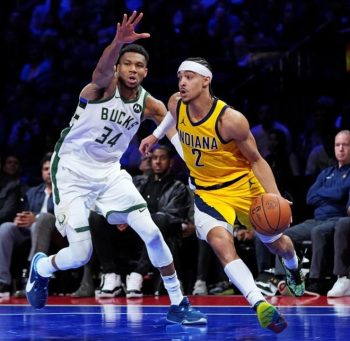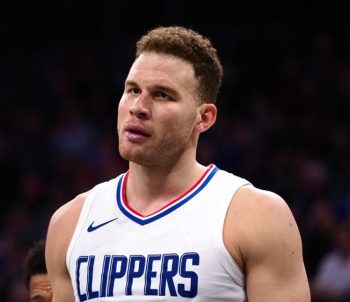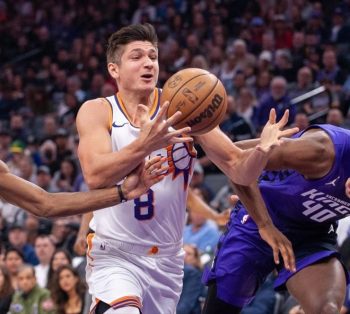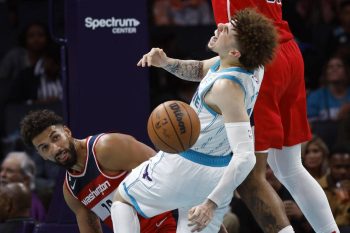NBA
NBA Sunday: Learn From Lance Stephenson

After being selected with the No. 47 overall pick of the 2006 NBA Draft, Paul Millsap slowly but surely carved out a niche for himself with the Utah Jazz. He spent a few years playing behind Andrei Kirilenko, Mehmet Okur and Carlos Boozer before eventually emerging as a starter in the wake of Boozer’s 2010 departure.
In July 2013, after proving he was an impact player at the NBA level, Millsap agreed to what many believed was a below-market contract with the Atlanta Hawks: $19 million over two years. After playing out those two seasons, Millsap re-signed with the Hawks in July 2015 on a three-year deal worth $60 million.
It was a rare instance when a player “betting on himself” and opting for a shorter-term contract for less money paid off in the end. Not every player is as fortunate.
Just ask Lance Stephenson.
* * * * * *
Like Millsap, Stephenson was a second-round pick who found success in the NBA. Playing under Frank Vogel in Indianapolis, Stephenson had some freedom to utilize his gifts on the floor but, somehow, remained disciplined enough on both ends to not be a detriment to his team.
After experiencing some success with the Pacers, Stephenson sought a new contract and opted to bypass the five-year, $44 million offer that the Pacers made to retain him in July 2014. Instead, Stephenson chose to sign with the Charlotte Hornets on a three-year deal worth $27 million. It was a rare occurrence where a non-superstar opted for a shorter-term contract, believing it to be in his best long-term financial interest. He thought he’d thrive in Charlotte, then the market when his individual stock and the NBA’s salary cap were significantly higher.

Since packing his bags for Charlotte, Stephenson has been traded twice. First, the Hornets sent him to the L.A. Clippers in exchange for Matt Barnes and Spencer Hawes. Eight months later, the Clippers sent him to the Memphis Grizzlies in exchange for Jeff Green.
After a somewhat uneventful tenure in Memphis, the Grizzlies declined that third-year option on Stephenson’s contract. After the first week in August, he remains a free agent whose options appear to be extremely limited.
Not every free agent winds up being as productive and as fortunate as Paul Millsap, so Stephenson should serve as a cautionary tale to every player who considers leaving guaranteed money on the table.
Other cautionary tales include J.R. Smith, Josh Smith and Ty Lawson. In their own right, each player has had personality or disciplinary issues in the past. J.R. Smith was obviously a key contributor on the Cleveland Cavaliers 2016 championship team, but the fact that he remains unsigned by the team after the first week in August may not bode positively for his future there and it certainly doesn’t bode well for his marketability or bargaining power.
Since leaving the Atlanta Hawks for the Detroit Pistons back in July 2013, Josh Smith has been descending dramatically. His minutes and productivity have decreased and he is no longer viewed as a player who makes a positive difference on the court. Things were so bad with Smith in Detroit that Stan Van Gundy opted to waive him and pay out the remaining $26 million owed to him under the terms of his contract to get him off the roster. The Pistons have been a much better team since that move, and the stench has remained with Smith.
Ty Lawson, unlike the J.R. and Josh Smith, had more than just personality and personnel issues in the NBA. Lawson, quite notably, was arrested multiple times. His two latest arrests occurred in 2015 and, over the years, Lawson has had numerous issues with driving under the influence. Where he is similar to Stephenson, however, was his willingness to bet on himself. He was desperately needing a change of scenery from the Denver Nuggets and gave up guaranteed money to make that move happen. Lawson had agreed to a four-year, $44 million extension with the Nuggets in October 2012, but as a condition of the July 2015 trade that sent Lawson to the Houston Rockets, he agreed to waive the $13 million guaranteed salary that he was entitled to for the 2016-17 season under the terms of the extension he signed with the Nuggets. The Rockets subsequently waived Lawson and that $13 million is money that he’ll likely never recoup.
Each of the aforementioned players have had success at various points while in the NBA, but it has not been easy for any of the four to find work lately. In today’s NBA, after seeing the San Antonio Spurs reign, the prevailing belief across league circles is that building a winning team and an elite franchise starts with high-character players and a strong culture.
While every player deserves a second chance (and most do get second chances), recurring disciplinary issues or episodes can be fatal to a career. Or, at least, hurt a player’s wallet and end their days of being a powerful earner.
The bright side for a player like Stephenson is that the NBA’s salary cap is expected to continue to rise. Over the course of the next year, the NBA and the Players Association will have more conversations related to the league’s collective bargaining agreement. If a new agreement is ratified, the cap calculations and mechanics may change. However, if the current system remains substantially similar to any new system that may be implemented, there will be opportunities in abundance.
* * * * * *
With a $94 million salary cap taking effect for the 2016-17 season and each team being required to spend about $85 million on payroll, scores of players have easily found rich deals. Aside from Mike Conley’s record-setting five-year, $153 million contract, other players such as Timofey Mozgov ($16 million), Ian Mahinmi ($16 million), Bismack Biyombo ($18 million), Chandler Parsons ($23 million) and Harrison Barnes ($23 million) have each found lucrative paydays.
Next summer, the most conservative cap estimates have the additional cap increase brought forth by the influx on new television money at $8 million. In other words, in July 2017, there will be more money available and higher dollar amounts given out. For a player like Stephenson (as well as J.R. Smith, Josh Smith and Ty Lawson), the availability of that money could signify another opportunity to cash in and resume what seemed to once be very promising, very lucrative careers.
However, in the interim, each players has to prove that they can stay out of trouble and contribute to a winning environment. Heading overseas is an option and so is taking a one-year contract with the hopes of cashing in next summer. One thing that recent history has shown us, however, is that once a player accepts a minimum contract, it is difficult for him to “unbrand” himself as being a “minimum” player. It was that exact fear that prevented Steve Nash from taking far below his market value in the sign-and-trade deal that was eventually agreed to by him involving the Phoenix Suns and the Los Angeles Lakers back in July 2012.
Back then, Nash seemed to know what many of today’s players don’t fully understand: tomorrow is promised to no one. Interestingly enough, the Nash acquisition was a disaster for the Lakers. They surrendered four draft picks in exchange for Nash (first-round selections in 2013 and 2015 and second-round selections in 2013 and 2014) and agreed to pay him $27 million over three years. During his time there, Nash would appear in only 65 games due to injuries and didn’t come anywhere close to producing like he did with the Suns.
On a personal level, Nash won. Those years had to be frustrating, but he has a lot of money to show for them. And if there is one thing all other players should learn from Lance Stephenson, J.R. Smith, Josh Smith and Ty Lawson still searching for jobs after the first week in August, the first would be to keep your nose clean and the second would be to take the money and run when faced with the opportunity.
As the Atlanta Hawks waived goodbye to Al Horford and Jeff Teague, Paul Millsap has suddenly emerged as one of the elder statesmen in Mike Budenholzer’s lineup. He bet on himself years ago, and he won.
But make no mistake, that isn’t the norm for non-superstars in today’s NBA.











